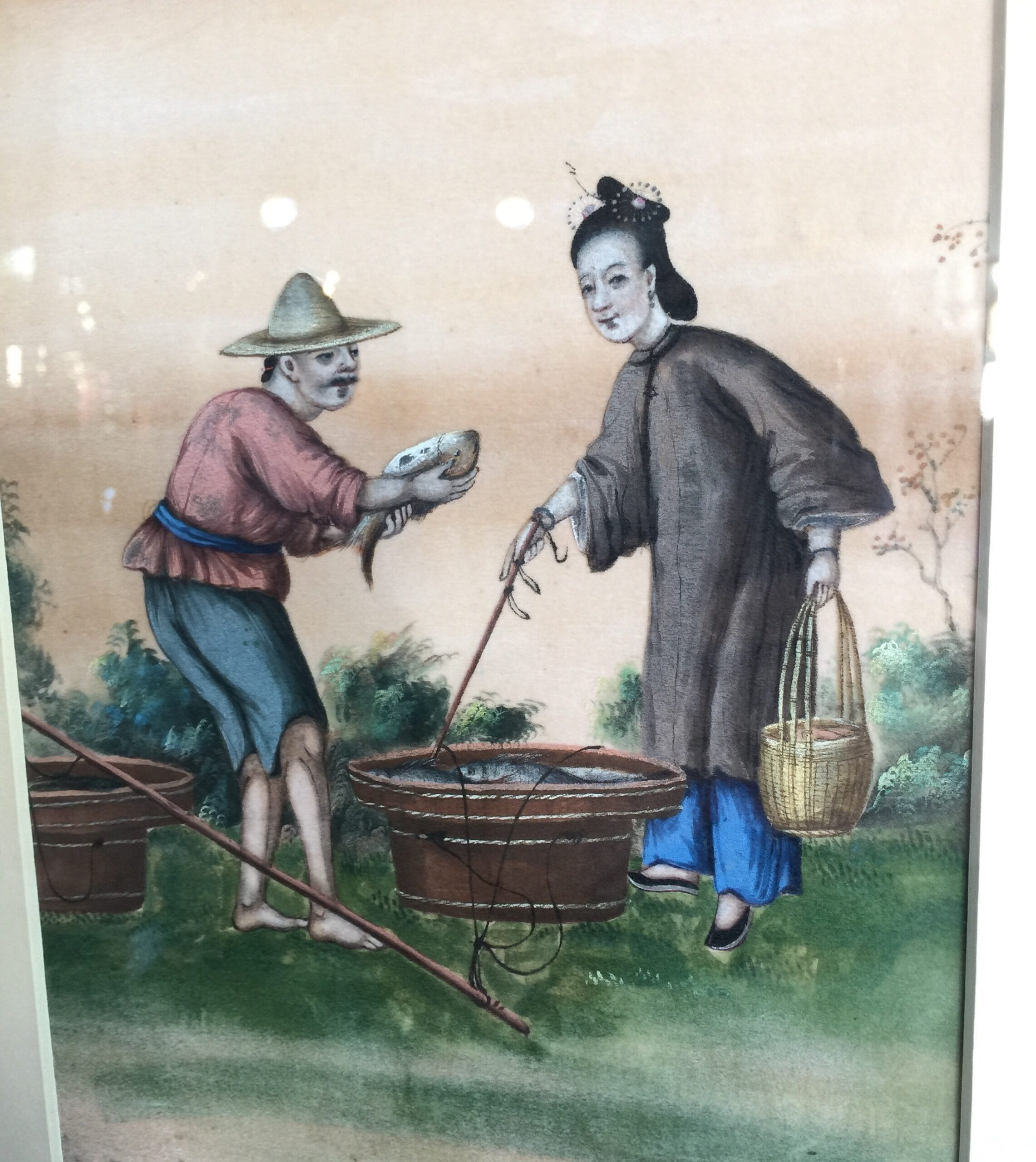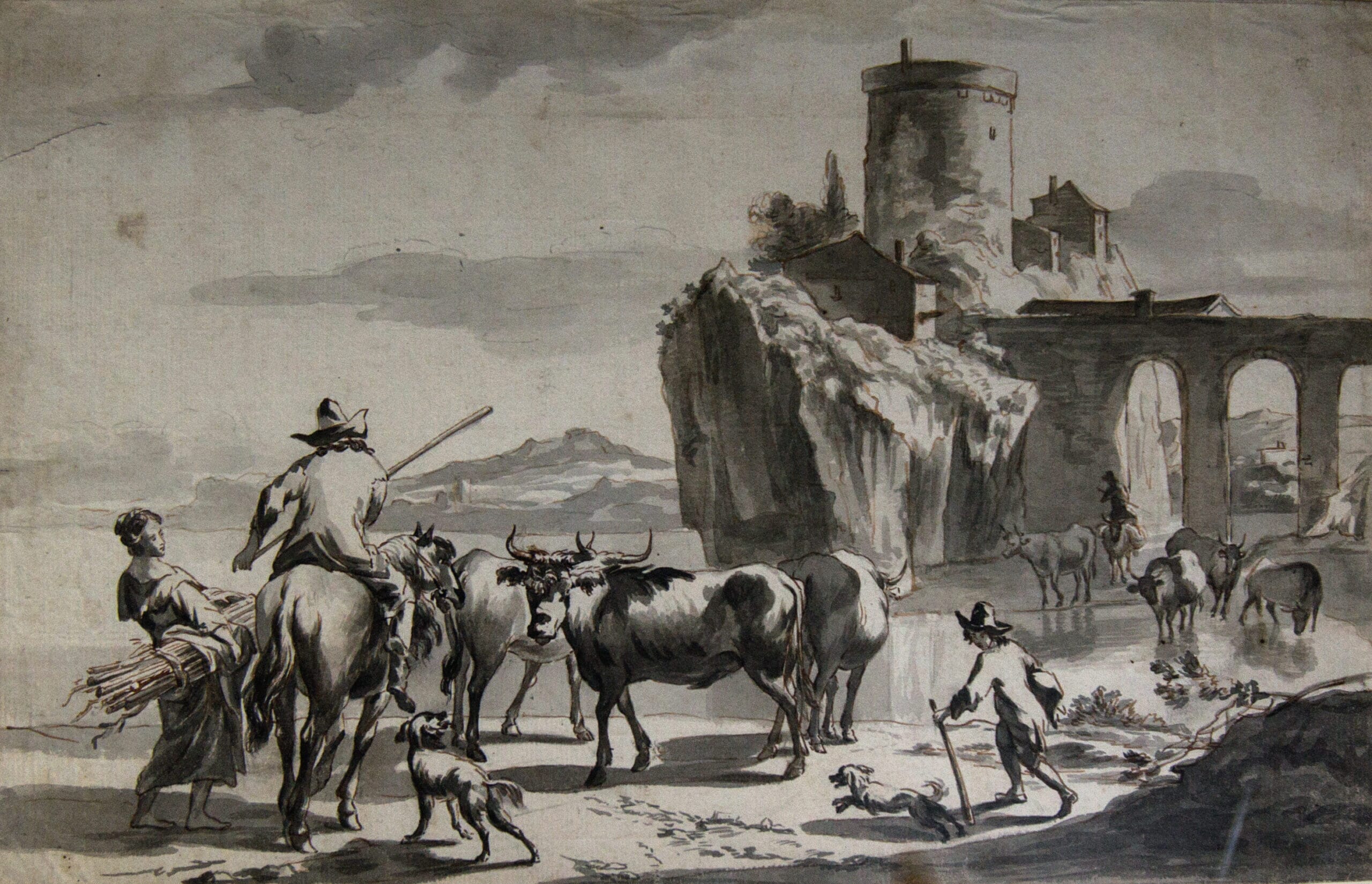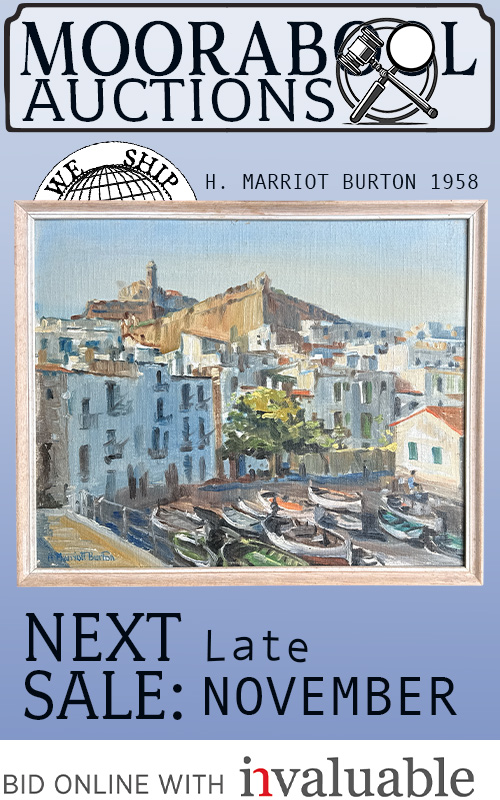Joos van Cleve, 1505-1541 (studio) Holy Family, C. 1525
Sold
The Holy Family, by Joos van Cleve (1480/90-1540/41), showing Mary with the Christ child before a cloth of honour, seated on a high backed settle beside her mother, Saint Anne, who is in the act of offering the child an apple; behind her stands Saint Joachim, Mary’s Father, and behind Mary is Joseph, her husband; the whole scene in a porch area within arches and with a tiled floor, in the background an extensive landscape.
Old collection labels to reverse, including two sealing wax seals;
Attributed to Joos van Cleve and studio.
Oil on wood panel, Circa 1525
| Condition | Old restoration, losses, pentimenti revealing underdrawing, particularly in faces and child. |
|---|---|
| Size | 54 x 68 cm unframed |
| References | Joos van Cleve (ca. 1480/90, Cleves - 1540/41, Antwerp), was a Netherlandish painter who was active in Antwerp from 1511 to 1540. He died between November 1540 and April 1541. He was one of twenty van Cleefs who painted in Antwerp, but whether the well-known Henry, Martin, and William (the younger) were kin of his cannot be determined. His father, William (the elder) was a member of the Antwerp Academy, which Joos also joined. He is the father of the painter Cornelis (Sotte Cleef) van Cleve (1520-c.1569). He is known primarily for his religious and portrait painting. Among his best known works are portraits of Francis I and Eleonora of Austria, King and Queen of France. He collaborated with Joachim Patinir on some works. He is also known for integrating Northern and Southern modes of painting, as well as using certain aspects of his compositions repeatedly, to please the growing art market. This work belongs to a small group of the same subject, the Holy Family, showing Mary & the Christ child in conversation with the inlaws. Saint Anne (Mary’s mother) and Mary & child are seated on a high backed settle, with a balding Joseph looking over the settle back behind Mary, and Saint Joachim (father of Mary, husband of Anne) on the other side of the settle, seporated by a stone pier from which hangs the ‘cloth of honour’. The work is interesting for its strong underdrawings, and the fact that they are visible, particularly in the child; these lines were part of the initial sketch for the work, and were usually subsequently painted over and not visable. Their appearance here would suggest an unfinished work, the sketch perhaps being the work of Joos, the painting that of his workshop assistants, who included his son Cornelis. John Hand, in his work ‘Joos van Cleve’, notes two versions of this subject, with several copies (#35 Modena, & #36 Brussels). This work is neither, but has characteristics of both. The Brussels example is closest, and is “...... new and important.... it bespeaks an assimulation of certain elements of Italian painting. Particularly noticable is the imposition of a spacially coherent geometric pattern on the arrangement of figures. The Holy Family form a triangle........ the bodies .... as well as the floor tiles form a diamond shaped parallelogram....” This use of a geometric pattern, Hand notes, is apparent in Italian art (ie Raphael), but not in Netherlandish art. Hand points out that Joos van Cleeve was important in changing the manner of depicting the Holy Family in northern art, particualry in making them appealing in a domestic setting. His clients were often wealthy merchants, and they were often intedned for display in their houses, rather than chapels. His works achieve a certain human dimension that is still appealing 500 years later. |
Sold - let us find you another










